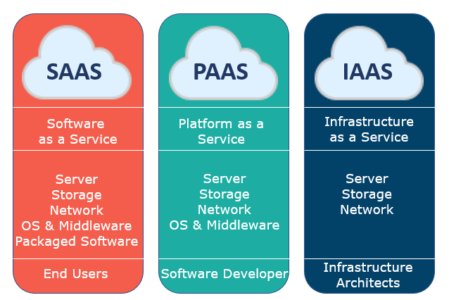Universal Cloud Service: Versatile and Scalable Solutions for every single Sector
Wiki Article
Achieve Seamless Scalability With Cloud Provider
In the ever-evolving landscape of cloud solutions, achieving seamless scalability stands as a keystone for contemporary services seeking to stay versatile and competitive. The mission for smooth scalability with cloud solutions introduces a globe of possibilities for those willing to welcome the transformative power of dynamic resource administration.Advantages of Cloud Scalability
Cloud scalability provides companies the adaptability to dynamically change resources based on demand, ensuring optimum efficiency and price effectiveness. Additionally, cloud scalability advertises development and trial and error by permitting services to easily check new concepts and range them as needed. Ultimately, the benefits of cloud scalability prolong past expense savings to include enhanced efficiency, agility, and technology.Trick Functions for Scaling
Efficient scaling in cloud services relies on vital functions that enable organizations to change sources dynamically based on demand. Another key feature is scalability, allowing systems to manage enhanced workload by adding resources effortlessly. Generally, these essential features collectively encourage companies to accomplish seamless scalability in cloud solutions.Applying Auto-Scaling Methods
To efficiently maximize source allocation and adjust to varying workloads, companies have to tactically apply auto-scaling techniques in their cloud solutions facilities. Auto-scaling allows systems to instantly adjust the variety of compute sources based on real-time need. There are different auto-scaling methods that organizations can utilize, such as predictive scaling, which uses historical data to anticipate future source needs, and reactive scaling, which reacts to present workload modifications.
Finest Practices for Scalability
For companies intending to boost their scalability in cloud services, implementing ideal methods is important for optimal efficiency and source administration. One key ideal method is creating applications with a microservices design. This strategy breaks down applications into smaller sized, independent solutions that can be released, updated, and scaled independently, enabling greater flexibility and scalability.Another essential practice is using containerization technology, such as Docker or Kubernetes. Containers make it possible for the product packaging of applications and their dependencies right into isolated devices, making it much easier to scale components independently and release them consistently throughout various atmospheres.
Additionally, applying automated deployment and framework as code (IaC) can streamline scalability initiatives (linkdaddy cloud services). Automation tools like Terraform or Ansible aid in provisioning and taking care of resources efficiently, decreasing hand-operated mistakes and enabling fast scalability
Additionally, keeping an eye on efficiency metrics, setting up notifies, and performing regular capability preparation are vital techniques to make certain positive scalability management. By adhering to these best techniques, organizations can attain seamless scalability in their cloud services while optimizing performance and source use.
Monitoring Performance Metrics
When examining the performance of cloud services scalability, carefully keeping an eye on efficiency metrics is necessary for guaranteeing ideal performance and resource allotment. By continuously tracking essential performance indicators (KPIs) such as response times, resource, latency, and throughput use, companies can get beneficial understandings into the health and performance of their cloud framework. Monitoring efficiency metrics permits for the early detection of potential bottlenecks or concerns that can affect scalability, enabling aggressive steps to be required to address them before they rise.

Final Thought
Finally, achieving seamless scalability with cloud solutions is essential for companies to enhance performance, boost technology, and preserve high performance degrees during peak times. By leveraging the benefits of cloud scalability, applying auto-scaling methods, utilizing key attributes such as elasticity and automation, and adhering to ideal techniques like application layout and efficiency tracking, businesses can effectively scale their systems while making best use of resource application and efficiency.The quest for smooth scalability with cloud services introduces a globe of possibilities for linkdaddy cloud services press release those willing to accept the transformative power of dynamic source administration.
Cloud scalability offers companies the versatility to dynamically readjust resources based on need, making sure ideal efficiency and expense efficiency. One more key function is scalability, allowing systems to deal with raised workload by adding sources effortlessly.For organizations aiming to boost their scalability in cloud services, carrying out ideal practices is essential for optimum performance and resource monitoring.When evaluating the efficiency of cloud services scalability, very closely keeping track of performance metrics is important for making sure optimal capability and resource appropriation.
Report this wiki page